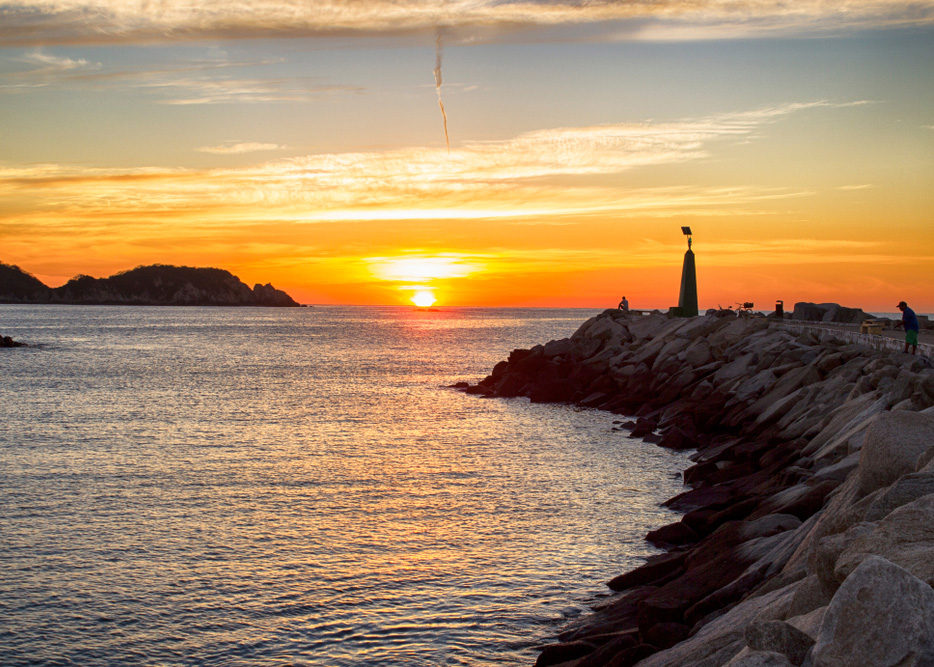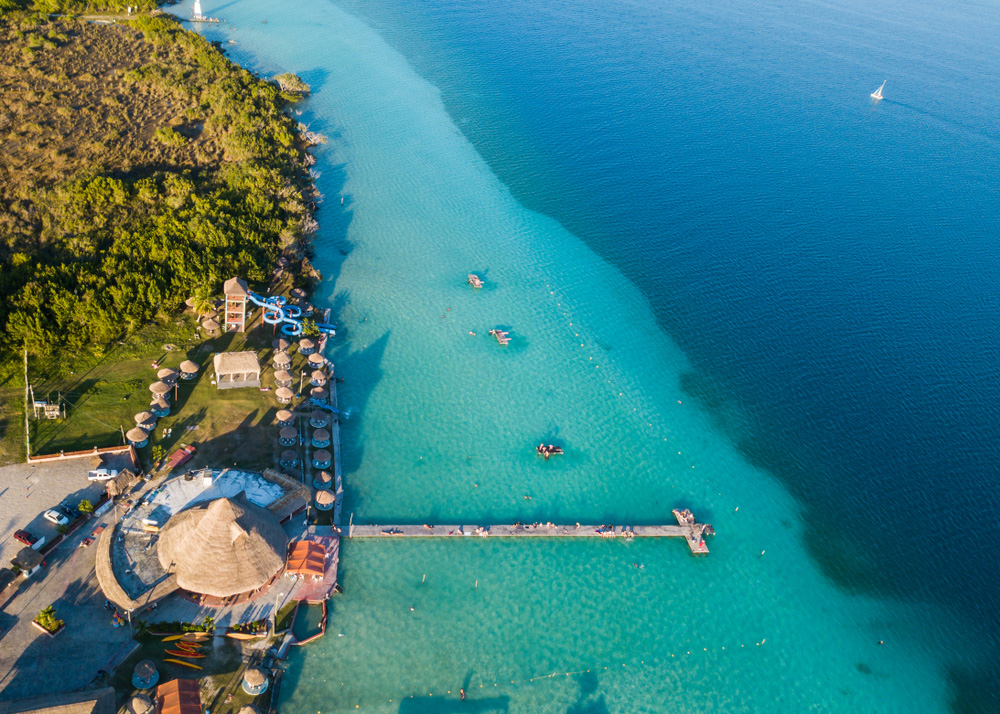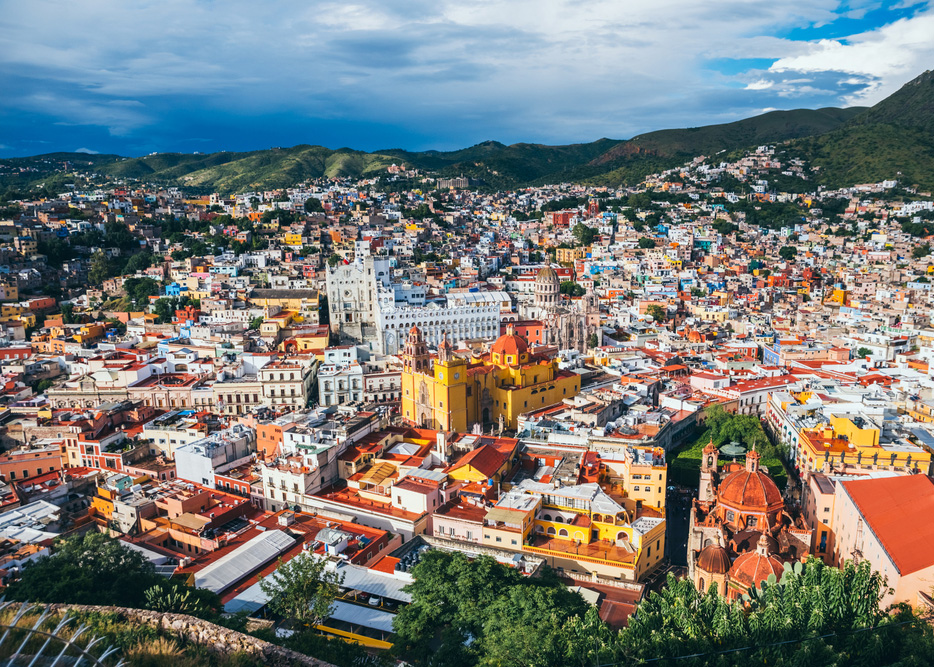“Is Mexico safe?” It’s a question many American travelers have asked themselves, especially in the wake of a sweeping security alert for Mexico issued by the U.S. State Department. Such travel advisories can be confusing, but this one is pretty clear and even includes a color-coded map revealing the most dangerous (marked in red) and safest places in Mexico (marked in blue).
Mexico is a vast country, with heaps of beautiful and interesting places to see, and some 28 million Americans safely travel there each year. To help you plan your own trip, I’ve gathered some of the safest places to visit in Mexico, complete with information on why you should go and where to stay.
The Safest Places in Mexico
Keep in mind that bad things can happen even in the safest places in Mexico, and destinations that don’t appear on this list could still be great spots for a vacation. No matter where you go while traveling abroad, you’ll want to follow common-sense rules such as drinking only in moderation, getting a cab instead of wandering around after dark, and leaving your valuables at home.
Mexico City

Despite a longstanding reputation as a dangerous city to visit, Mexico City only has an advisory to exercise increased caution, and for good reason; the downtown core in particular is considered quite safe, and the city has numerous attractions for visitors—including street art, colorful markets, and more than 150 museums.
Where to Stay: The small, beautifully decorated Nima Local House Hotel is one of the best luxury hotel options in the city. For a more affordable option, consider the Chillout Flat Bed & Breakfast, which earns plaudits for friendly service and homemade granola.
Puebla

Once considered a nice day trip from Mexico City (it’s two hours away by car), Puebla is emerging as a primary destination in its own right. After all, it’s not a small village; Puebla is Mexico’s fourth-largest city, with some of the country’s best examples of Spanish colonial architecture. Additionally, at 7,200 feet above sea level, Puebla never gets too hot, and it’s considered one of the safest places in Mexico.
Where to Stay: There are numerous places to stay in Puebla that won’t break the bank. One of the best is the Casona Maria Hotel Boutique, with its pretty courtyard and convenient location within walking distance of the historic center.
San Miguel de Allende

San Miguel de Allende is one of the safest places in Mexico, as evidenced by its popularity with expats. This UNESCO World Heritage Site is situated almost right in the middle of Mexico and offers cobblestone streets, Spanish colonial churches, and plenty of great restaurants. The nearby Sanctuary of Atotonilco, less than 10 miles away, is also a World Heritage Site and an important pilgrimage site for penitent Mexicans and tourists alike.
Where to Stay: With its cozy common areas and brightly painted rooms, Casa de la Noche is an appealing place to rest your head.
Tulum

As Playa del Carmen has been the site of some troubling violence in the past, the coastal town of Tulum to the south may be a safer alternative. It is also less touristy than other resort towns on the Yucatan Peninsula, offering well-preserved ruins of the former Mayan city walls and other historic structures right in town. The State Department has explicitly stated there are no restrictions on travel to Tulum or to Chichen Itza, the magnificent archaeological site just an hour up the road.
Where to Stay: Guests appreciate the clean, comfortable rooms and fast Wi-Fi at the centrally located Posada Luna del Sur.
Huatulco

A beach town located in Oaxaca to the southwest of Puerto Escondido, Huatulco offers tons of water activities such as snorkeling and scuba diving, some nearby surf spots, and tours of coffee farms to boot. Huatulco is considered one of the safest places in Mexico.
Where to Stay: For an indulgent resort experience you can’t do much better than Secrets Huatulco Resort & Spa, where amenities include multiple swimming pools and tennis courts, yoga classes, watersports, and seven restaurants.
Merida and Valladolid

Gerardo Tanaka Pacheco, Senior Account Executive for MSL Group, the public relations firm for VisitMexico.com, recommends these two towns as great alternatives to other nearby tourist hot spots. “A lot of people go to Playa del Carmen and Tulum, but on the Yucatan Peninsula there are these two beautiful colonial cities that are so welcoming, colorful, and full of traditions that travelers won’t regret visiting them,” he says.
A great example of Spanish colonial influence, Merida is a walking-friendly town that is connected to Chichen Itza by a toll road, which is considered the safest way to travel in Mexico if you are driving. The Mayan influence remains strong here, and the area has its own style of cuisine that diverges considerably from what you will find in other parts of Mexico.
Midway between Merida and Cancun is Valladolid, a colorful and friendly city that’s within easy driving distance of several beautiful cenotes.
Where to Stay: In Merida, consider snagging a poolside room at the Luz En Yucatan. In Valladolid, you can’t go wrong at the centrally located Hotel Posada San Juan.
Bacalar

Pacheco says that Bacalar, also on the Yucatan Peninsula, is “an amazing place, kind of unknown and definitely uncrowded. This is one of my favorite secrets spots in Mexico; the lagoon there is unbelievable.”
Called the Lake of Seven Colors, the lagoon stretches for 42 kilometers and is fed by underground rivers. Like Todos Santos mentioned below, Bacalar holds the official designation as a “Pueblo Magico,” or Magical Town, due in large part to the lagoon. In addition to being one of the safest places in Mexico, Bacalar is also very affordable.
Where to Stay: At the Bacalar Lagoon Resort, you can get a view of the lake right from your cabana.
Guanajuato

Why visit Guanajuato? Think old mines, a mummy museum, and streets so narrow that one is called the Alley of the Kiss because couples can smooch one another from opposite sides. You can visit Guanajuato as a day trip from nearby San Miguel de Allende or use it as a home base in itself. Visitors to the area are mostly native Mexicans, so you can immerse yourself in the culture fairly well; try a miner’s enchilada if you get a chance.
Where to Stay: For a cozy stay right near the funicular into the center of town, book one of the eight rooms at Casa Zuniga B&B. There’s a homemade Mexican-style breakfast every morning.
Campeche

Another UNESCO World Heritage Site located on the western coast of the Yucatan Peninsula, Campeche is a walled Spanish colonial city that has been superbly restored nearly to its former glory. The walled center is somewhat of a museum piece, but the life of the town surrounding it might even be the main attraction. There are also significant Mayan ruins in the state of Campeche, of which the city is the capital; these aren’t as well known as the famous ruins to the east, and as such they’re less crowded.
Where to Stay: Try for a balcony room or suite at the modestly priced Hotel Socaire.
Queretaro

Queretaro’s streets are a wondrous mix of old and very old, as grid-like Spanish streets connect to the pre-Hispanic winding lanes from the time of the Otomi. From rock climbing and art galleries to architecture sightseeing, there is a ton to do in this central Mexican city.
Where to Stay: La Casa del Atrio, across from the Museo de Arte, is both popular and affordable.
Yelapa

Yelapa is “Mexico’s last authentic beach town,” says Pacheco, “and is definitely under the radar. [Expect] great seafood, great beaches, nice hotels, and none of the inflated prices.”
I’ve included Yelapa for folks who want a deeper Mexican experience, but note that it’s in one of the State Department’s orange zones—so you’ll want to do a bit more research before choosing this part of Jalisco.
Where to Stay: The Hotel Lagunita is right on the water, with amazing views and a pool from which to enjoy them.
Todos Santos

This surf town in Baja California Sur features world-class waves and lots of natural beauty—and it’s just far enough north of touristy Cabo San Lucas to offer respite from the crowds. Todos Santos is slowly being discovered, but its stone streets and uncrowded beaches have earned it the official Pueblo Magico designation.
Where to Stay: Posada La Poza has a fantastic oceanfront location at very reasonable rates.
[viator_tour destination=”628″ type=”3-mod”]
Ed Hewitt is a seasoned globetrotter who brings you a monthly glimpse into the latest travel news, views, and trends—and how they could affect your travel plans.
Editor’s note: This story was originally published in 2018. It has been updated to reflect the most current information.
We hand-pick everything we recommend and select items through testing and reviews. Some products are sent to us free of charge with no incentive to offer a favorable review. We offer our unbiased opinions and do not accept compensation to review products. All items are in stock and prices are accurate at the time of publication. If you buy something through our links, we may earn a commission.
Related
Top Fares From
Today's Top Travel Deals
Brought to you by ShermansTravel
France: 8-Night Paris, Avignon & Nice...
Infinity Worldwide Vacations
 vacation
$2880+
vacation
$2880+
Poconos: 3 Nts in Garden of...
ResortsAndLodges.com
 hotel
$305+
hotel
$305+
7-Nt Canada & New England Cruise,...
Princess Cruises
 cruise
$839+
cruise
$839+




